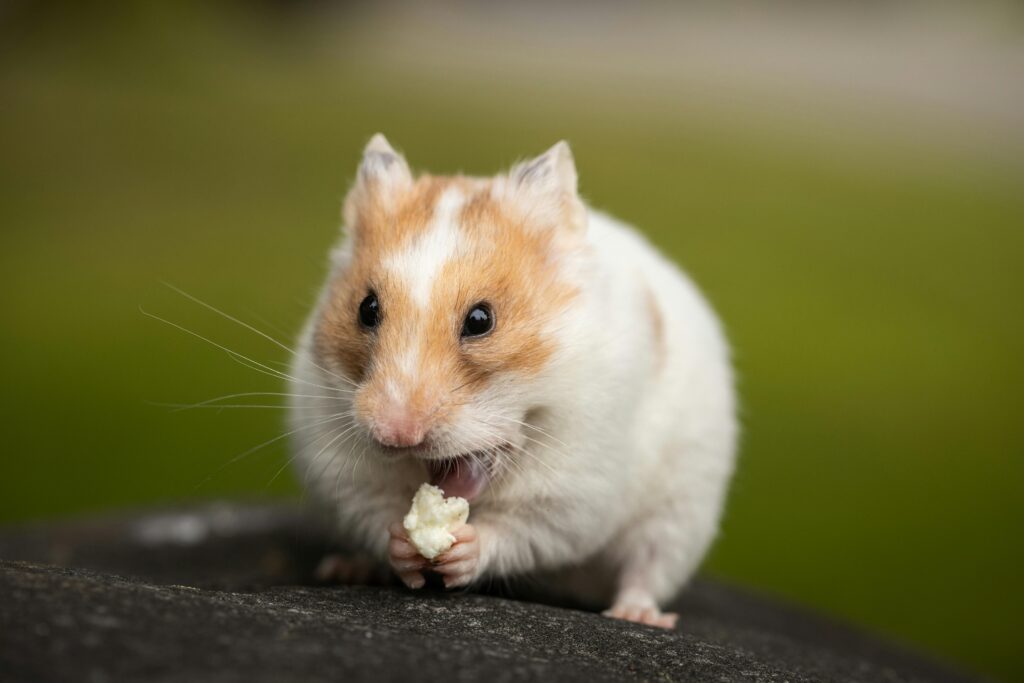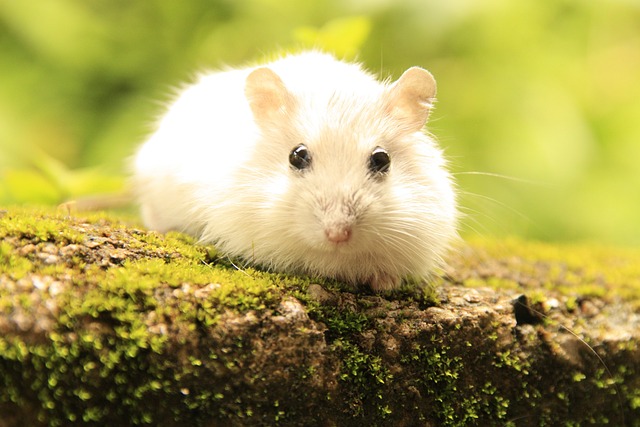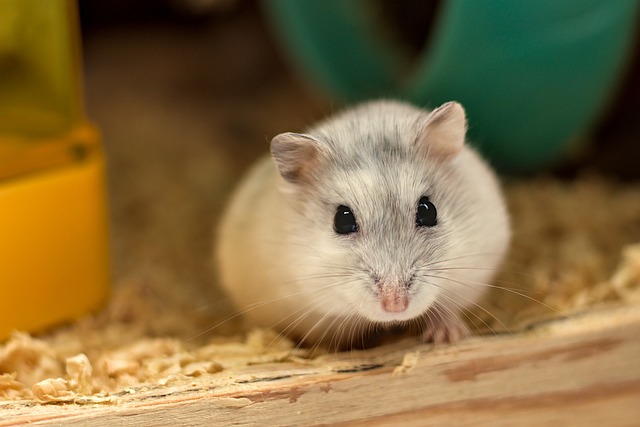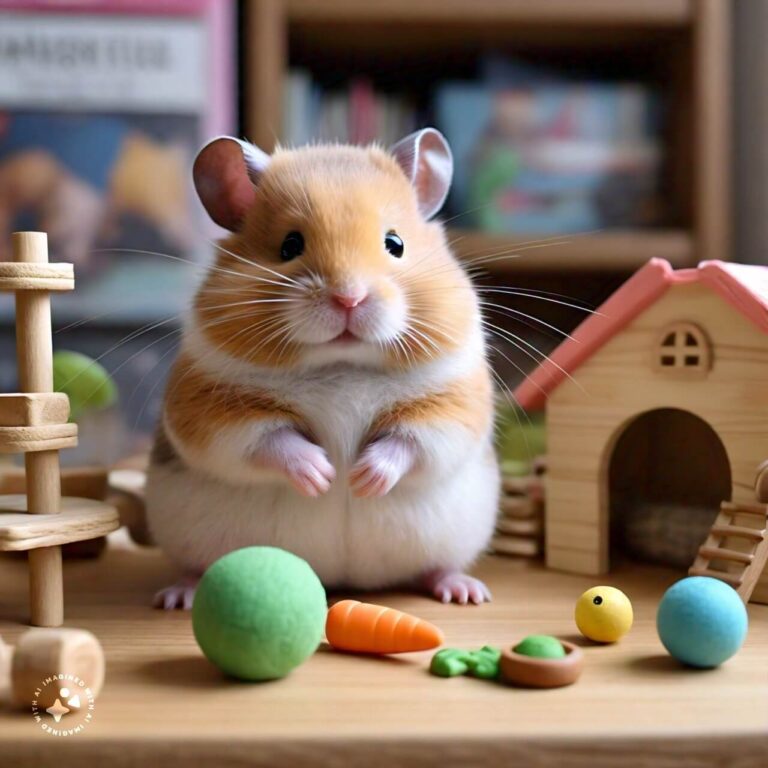Types And Habits Of Syrian Hamster -Hamsters.pk
Exploring the Varieties: Common Types of Syrian Hamsters
Syrian hamsters, also known as golden hamsters, are a popular choice for pet owners due to their friendly nature and manageable care requirements. These small rodents are fascinating creatures with a variety of types distinguished by their coat types and colors. This article delves into the common varieties of Syrian hamsters, highlighting their unique features and what makes each type special.
The Basics of Syrian Hamster Varieties
Syrian hamsters are originally from the arid regions of northern Syria and southern Turkey. They are solitary animals, typically requiring separate living spaces once they mature, around 8 to 10 weeks of age. Known for their stout bodies and short tails, Syrian hamsters usually grow to about 5 to 7 inches in length.
Coat Types: From Short to Long
The first distinction in Syrian hamster varieties is their coat type. Here are the three primary coat types:
- Short-Haired: Also known as the “standard” coat, this is the most common type found in Syrian hamsters. These hamsters have a dense, soft coat that is easy to care for, making them a favorite among first-time hamster owners.
- Long-Haired: Often referred to as “teddy bear” hamsters, these individuals have long, flowing coats that require regular grooming. Long-haired males typically have longer and fuller hair than females, especially around the hindquarters, where it forms a “skirt.”
- Satin: Satin hamsters possess a glossy sheen that makes their fur look almost metallic. This variant can occur in both short and long-haired types but is less common than the other coat types.
Color Variations: A Spectrum of Shades
Syrian hamsters come in a wide range of colors and patterns. The diversity in their appearance adds to their appeal as pets. Some of the most popular color variations include:
- Golden: The original color of wild Syrian hamsters, characterized by a golden brown coat with a lighter belly.
- Cream: A soft, pale yellow or beige color, often combined with white markings.
- Cinnamon: A warm brown shade with a reddish undertone, similar to the spice.
- Sable: A dark brown or black topcoat with a cream undercoat, giving them a two-toned appearance.
- White (Albino): Pure white fur with red eyes, resulting from a lack of pigmentation.
Patterns and Markings: Distinguishing Features
In addition to solid colors, Syrian hamsters can also have various patterns, which include:
- Banded: A white band encircles the middle of the hamster’s body, contrasting with the rest of the colored fur.
- Spotted: Known as “pied,” these hamsters have irregular white spots over their base color.
- Dalmatian: Similar to the spotted pattern, but typically with more distinct and rounded spots.
Choosing the Right Syrian Hamster
When selecting a Syrian hamster, consider the maintenance that different types might require—particularly in terms of grooming if choosing a long-haired variety. Additionally, personality can vary slightly between different types, with some colors or patterns possibly linked to specific temperaments, although this can be more anecdotal than scientifically proven.
Conclusion
Syrian hamsters are delightful companions that offer a variety of types for prospective pet owners. Whether you’re drawn to the simple elegance of a short-haired golden hamster or the exotic charm of a satin-coated beauty, there’s a Syrian hamster to suit every preference. Their easy care and friendly disposition make them ideal pets, especially for those new to keeping hamsters.

Nightly Adventures: Understanding the Nocturnal Habits of Syrian Hamsters
Syrian hamsters, also known as golden hamsters, are popular pets known for their solitary and nocturnal nature. This article explores the nocturnal habits of Syrian hamsters, shedding light on why they prefer the night and how pet owners can adapt to their unique patterns.
Why Are Syrian Hamsters Nocturnal?
Syrian hamsters are naturally adapted to being active during the night. This nocturnal behavior is an evolutionary trait that helps them avoid daytime predators and extreme daytime temperatures in their native desert environments. During the night, these hamsters are more active, exploring, foraging for food, and engaging in various activities that are crucial for their physical and mental well-being.
Common Nocturnal Activities of Syrian Hamsters
Exploration and Exercise: Once the lights go out, Syrian hamsters become highly active. They are known to run several miles in a single night on their exercise wheels. This activity not only helps them stay fit but also satisfies their instinctual need to explore.
Foraging for Food: In the wild, Syrian hamsters are adept foragers, often traveling long distances to find food. At home, they may mimic this behavior by searching around their cage for treats or hidden food items. It’s beneficial to scatter their food around the cage to encourage natural foraging behavior.
Nesting and Hoarding: Syrian hamsters have a natural instinct to hoard food. They often fill their cheek pouches with food and bedding materials to transport them back to their nests. Observing a hamster stuff its cheeks and organize its stash can be quite entertaining for owners.
Grooming: Nighttime is also when Syrian hamsters dedicate time to grooming themselves meticulously. This not only keeps their fur clean but also helps them regulate their body temperature.
Adjusting to Their Nocturnal Schedule
Understanding that Syrian hamsters are active at night can help pet owners manage their expectations and interactions. Here are a few tips to better align with their nocturnal habits:
- Quiet Environment: Since hamsters are most active at night, it’s important to place their cage in a part of the home where nighttime noise and light are minimal. This allows them to follow their natural cycle without disturbance.
- Evening Interaction: Interact with your hamster during the early evening hours. This is when they start to wake up and are more receptive to handling and playing.
- Observation: Nighttime is a perfect time to observe the fascinating behaviors of your Syrian hamster. Watching them can provide insights into their health and happiness.
The Benefits of Understanding Your Hamster’s Nocturnal Nature
By embracing the nocturnal habits of Syrian hamsters, owners can ensure that these adorable pets live a healthy, happy, and enriched life. It also enhances the bond between the pet and its owner, as understanding leads to better care and deeper appreciation of their natural behaviors.
In conclusion, the nocturnal activities of Syrian hamsters are both a survival mechanism and a source of fascination. Whether they are running on their wheel, foraging for food, or simply exploring their environment, these activities are essential for their physical health and mental stimulation. Understanding and accommodating their night-time antics can make all the difference in the life of a pet hamster.
From Nibbling to Nesting: Behavioral Traits of Syrian Hamsters
Syrian hamsters, also known as golden hamsters, are among the most popular small pets in households around the world. Their endearing appearance and relatively straightforward care requirements make them an ideal choice for both novice and experienced pet owners. This article delves into the various behavioral traits of Syrian hamsters, shedding light on their activities from nibbling to nesting.
Eating Habits: More Than Just Nibbling
Syrian hamsters are known for their peculiar eating habits. These small creatures are omnivores, which means they thrive on a mixed diet of seeds, grains, vegetables, and occasional proteins like boiled eggs or mealworms. One of the most distinctive behaviors is their tendency to hoard food. Hamsters stuff their cheek pouches with food to transport it back to their nest for storage. This behavior stems from their natural instinct to prepare for potential food shortages.
Activity Patterns: Understanding Their Nocturnal Nature
Unlike humans, Syrian hamsters are nocturnal, meaning they are most active during the night. During the day, they prefer to spend most of their time sleeping and resting in their nests. This nocturnal activity pattern is crucial for potential pet owners to understand, as it impacts how interaction and playtime are scheduled. Providing a wheel in their cage is a great way to allow them to fulfill their exercise needs during their active hours.
Social Behavior: Solitude Over Socializing
Syrian hamsters are distinctly solitary animals. In the wild, they live alone and can become territorial. This trait is crucial for pet owners to recognize to avoid aggressive behaviors that can arise if multiple Syrian hamsters are kept in the same space. It’s best to house them separately to prevent fighting, especially as they mature and their territorial instincts become more pronounced.
Nesting and Comfort: Creating a Safe Haven
Nesting is a significant aspect of a Syrian hamster’s life. They are adept at creating comfortable nests using available materials like tissue paper, hay, or specially made bedding sold in pet stores. Nesting provides them with a sense of security and comfort. It is important for owners to ensure that their hamster’s housing is clean, safe, and cozy, with ample opportunity for nesting. Regular cleaning of the nest area is also essential to maintain the health and happiness of the hamster.
Conclusion: Ensuring a Happy Hamster
Understanding the behavioral traits of Syrian hamsters is vital for anyone considering these charming creatures as pets. From their bold eating habits to their need for solitary nesting, each aspect of their behavior needs to be respected and catered to. With the right care, Syrian hamsters can make delightful, engaging pets who bring a lot of joy and entertainment to their human companions.
Housing and Care: Best Practices for Syrian Hamster Environments
Syrian hamsters, often referred to as Golden hamsters, are popular pets due to their friendly nature and manageable care requirements. However, creating an ideal living environment is crucial for their well-being. This guide outlines the best practices for housing and caring for Syrian hamsters, ensuring they live happy, healthy lives.
Choosing the Right Cage
Size Matters: The first step in providing a good home for your Syrian hamster is choosing the right cage. A common mistake is selecting a cage that’s too small. Syrian hamsters require ample space to explore, play, and exercise. A minimum cage size of 24 inches by 12 inches is recommended, but larger is always better.
Cage Type: Wire cages with a solid base are ideal as they provide good ventilation. However, ensure the wire spacing is narrow enough to prevent escapes. Aquariums are another option but require a mesh top for adequate air circulation.
Creating a Stimulating Environment
Bedding: Use safe, absorbent bedding to cover the floor of your hamster’s cage. Paper-based or aspen bedding is recommended as it is dust-free and non-toxic. Avoid cedar and pine bedding as they can cause respiratory issues in hamsters.
Enrichment: To keep your hamster engaged, include various toys and accessories in their cage. Wheels are essential for exercise; ensure they are solid-surfaced to prevent injuries. Tunnels and hideouts can help satisfy your hamster’s natural instincts to burrow and explore.
Location and Temperature
Strategic Placement: Place the cage in a quiet area away from direct sunlight and drafts. Syrian hamsters are sensitive to noise and extreme temperatures, so a stable environment is necessary to prevent stress.
Temperature Control: Maintain a room temperature between 65 and 75 degrees Fahrenheit. Extreme temperatures can lead to health issues like hibernation or heatstroke.
Diet and Nutrition
Balanced Diet: Provide a balanced diet consisting of a high-quality hamster mix, which should include seeds, grains, nuts, and pellets. Supplement this with fresh fruits and vegetables like carrots, apples, and broccoli in moderation to avoid diarrhea.
Fresh Water: Always have fresh water available. Use a water bottle with a metal sipper, as bowls can be easily contaminated with bedding and food.
Regular Cleaning
Routine Maintenance: Clean your hamster’s cage at least once a week. Replace all bedding and sanitize the cage with a mild, pet-safe cleaner to prevent disease. More frequent spot cleaning can help control odor and maintain a hygienic environment.
Health Monitoring
Regular Check-ups: Regularly observe your hamster for any signs of illness, such as lethargy, hair loss, or changes in eating habits. Early detection is key to effectively treating potential health issues.
Veterinary Care: Schedule annual check-ups with a vet who specializes in small animals. They can provide vaccinations and routine health screenings tailored to your hamster’s needs.
By following these best practices for housing and care, you can create a nurturing environment for your Syrian hamster. Remember, a happy hamster is an active, curious, and healthy pet.











